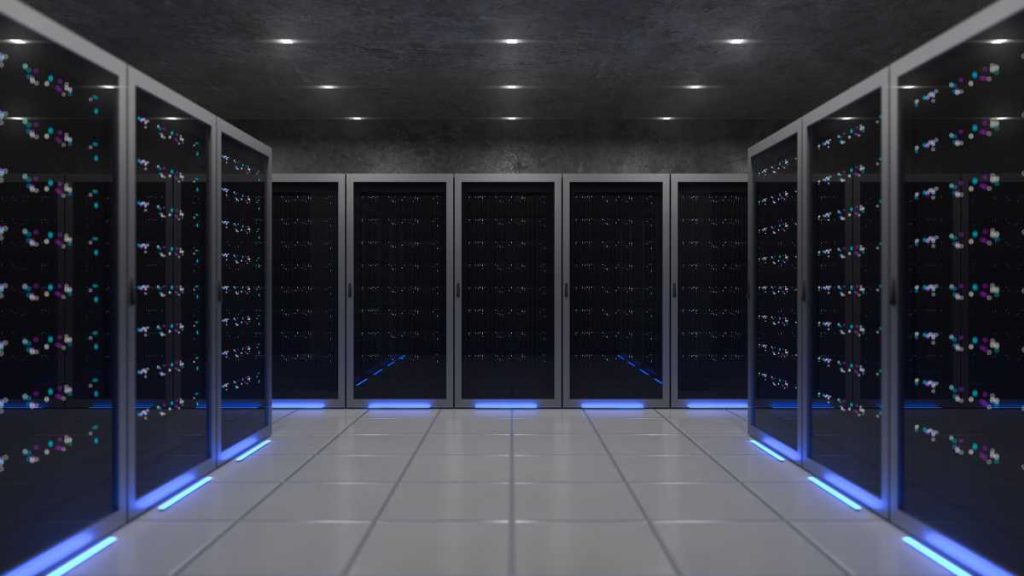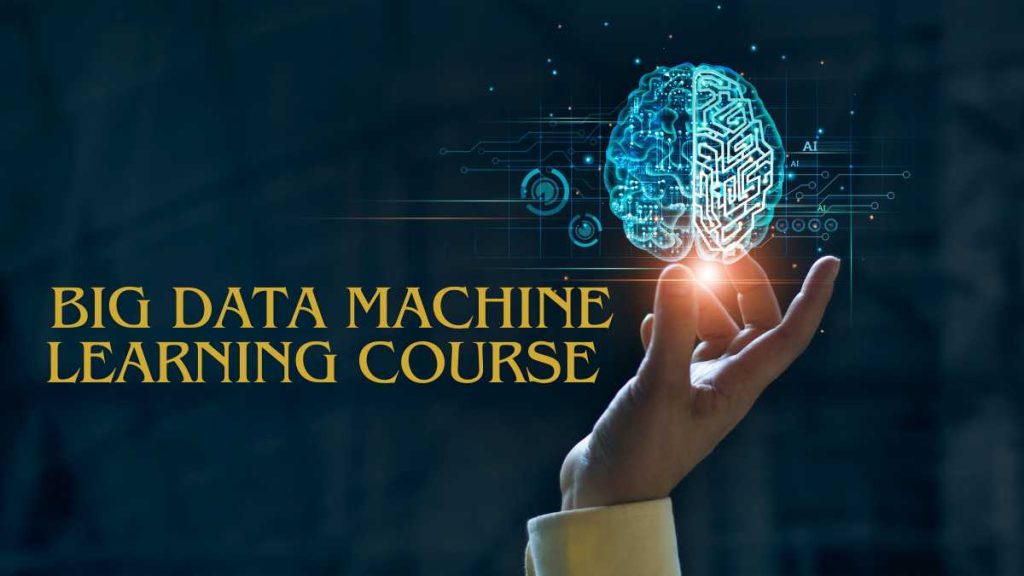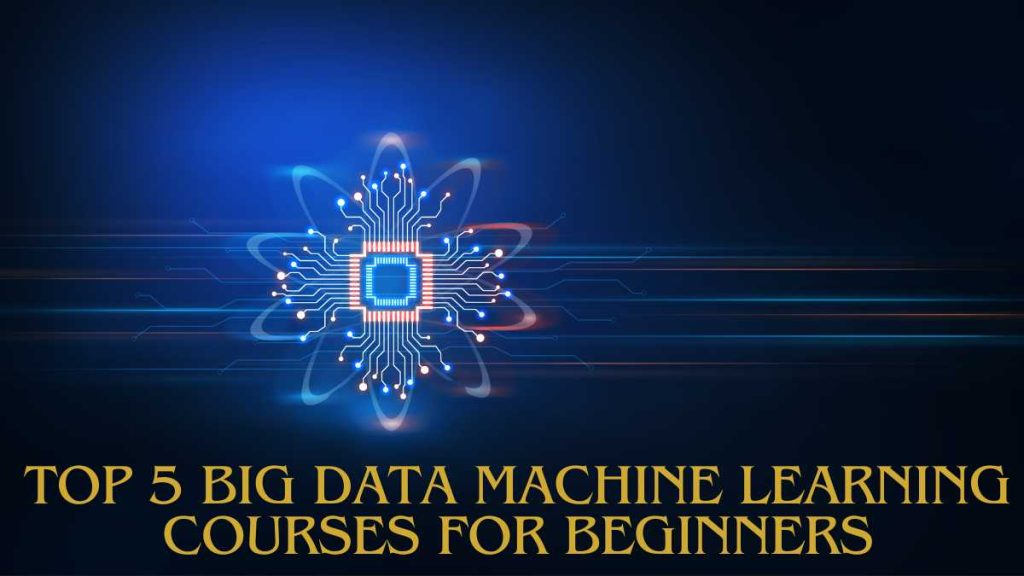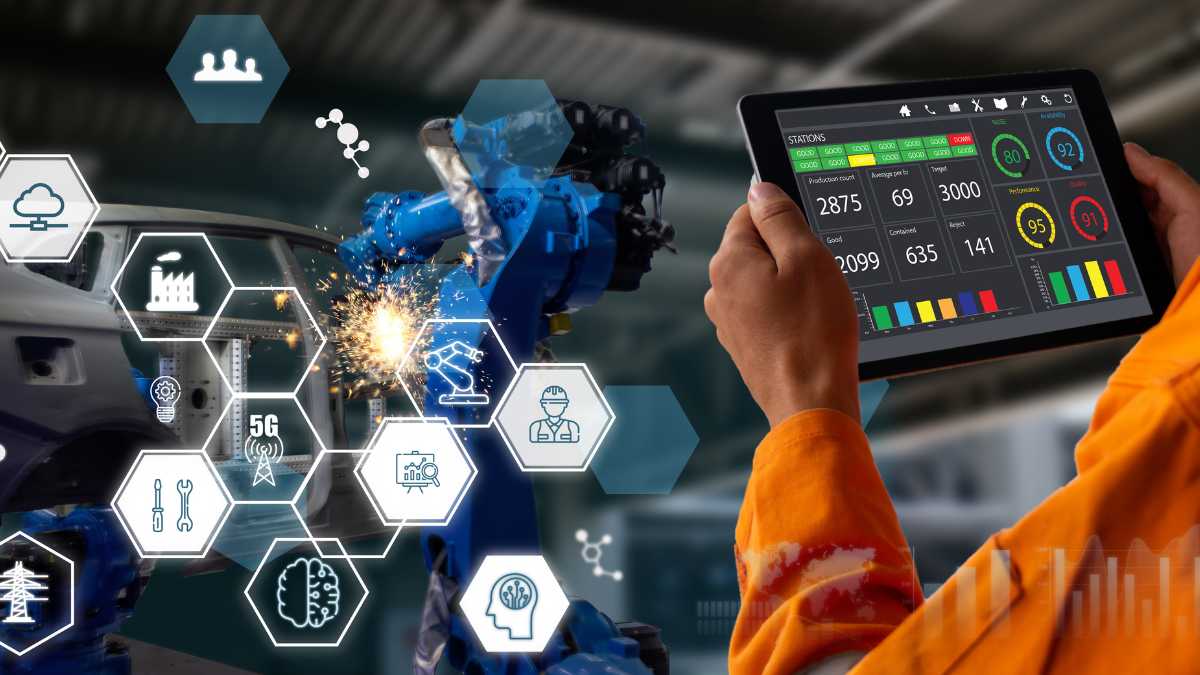Discover how to analyze massive datasets with machine learning. Find the right big data Machine Learning course for you.
Looking to get your feet wet with big data and machine learning, but don’t know where to start? We get it, diving into the world of big data analytics and machine learning can be overwhelming for newbies. But don’t worry, we’ve got you covered. In this article, we’ll walk through the best big data machine learning course for data science beginners like you.
Whether you want to analyze massive datasets or build predictive models, we’ll help you find the right intro ML course to get those data science skills. From reviewing key course features to comparing top providers, we’ll break it all down in simple terms. No need for a Ph.D. here! Just the essentials to launch your machine learning journey as a total newb. So get ready to geek out on big data, as we explore the ultimate beginner’s course for ML success. Let’s get started!
Introduction to Machine Learning for Big Data

| Concept | Description | Importance |
|---|---|---|
| Big Data | Datasets too large or complex for traditional data processing and analysis tools. Big data possesses characteristics like volume, variety, velocity, and veracity. | Traditional tools often can’t handle the size and complexity of big data. |
| Machine Learning (ML) | A subset of artificial intelligence where algorithms learn from data without being explicitly programmed for every rule. | ML unlocks the hidden value in big data, finding patterns, making predictions, and driving automated decisions. |
| Machine Learning with Big Data | Applying ML techniques specifically tailored to the challenges and opportunities of big data. | Provides the means to extract insights and create intelligent applications from massive datasets. |
What is Machine Learning?
Machine learning is a field of artificial intelligence that uses statistical techniques to give computer systems the ability to “learn” with data, without being explicitly programmed. Machine learning algorithms build a mathematical model based on sample data, known as “training data”, in order to make predictions or decisions without being explicitly programmed to perform the task.
Supervised vs Unsupervised Learning
The two main types of machine learning are supervised learning and unsupervised learning. Supervised learning uses labeled examples in the training data to learn a function that maps inputs to outputs. Unsupervised learning finds hidden patterns in unlabeled data. The most common unsupervised learning method is cluster analysis.
Important Algorithms
Some of the most popular machine learning algorithms used for big data are:
- Linear Regression: Predicts a continuous value based on linear relationships between variables. Used for forecasting and predicting quantitative outcomes.
- Logistic Regression: Predicts the probability of an event by fitting data to a logistic curve. Used for binary classification.
- Decision Trees: Creates a model that predicts outcomes by following a series of binary choices. Easy to understand but can be prone to overfitting.
- Naive Bayes: Uses Bayes’ theorem to calculate the probability of an event occurring based on prior knowledge of conditions that might be related. Fast, simple and surprisingly accurate.
- K-Means Clustering: Groups data into a specified number of clusters based on similarity. Useful for segmentation and pattern detection.
With the growth in big data, machine learning has become an invaluable tool for gaining insights and making predictions. The possibilities are endless!
Choosing the Right Big Data Machine Learning Course

| Factor | Considerations | Why It Matters |
|---|---|---|
| Your Goals | * Do you want a broad overview or to specialize? * Are you interested in a specific industry (finance, healthcare, etc.)? * What career outcomes are you targeting? | Aligning your goals with the course ensures you learn the most relevant skills and build a portfolio that supports your aspirations. |
| Skill Level | * Are you a beginner, or do you have some programming/statistics background? * Have you worked with big data technologies before? | Courses are tailored to different skill levels. Choosing one too advanced can be overwhelming, while a basic course may not offer the depth you need. |
| Content & Curriculum | * What machine learning algorithms are covered? * Does it include big data frameworks (Hadoop, Spark, etc.)? * Is there a focus on data manipulation, statistics, visualization, or deep learning? | Match the course content to the skills you want to develop and the types of problems you want to solve. |
| Projects | * Are real datasets or case studies used in projects? * Do you get to build your own projects or work on pre-defined ones? | Hands-on projects are the best way to apply your learning and build a portfolio to showcase to potential employers. |
| Instructor Expertise | * What are the instructors’ academic or industry backgrounds? * Do they have experience working with large-scale datasets? | Instructors with real-world experience can provide valuable insights and practical guidance. |
| Platform & Learning Style | * Is the course offered online or in person? * Do you prefer live lectures, recorded videos, or more text-based learning? * Is there support (forums, mentors, etc.)? | Your preferred learning style and the need for support will influence which course format suits you best. |
| Cost | * What is the total cost of the course? * Are there any scholarships or financial aid options? | Big data machine learning courses can range from free to several thousand dollars. Factor in affordability when making your decision. |
Look for courses focused on practical skills
For new data scientists, courses that emphasize hands-on practice with real-world datasets are ideal. Look for courses that teach Python, SQL, and data visualization tools like Tableau – the basic skills you’ll use every day. Some courses offer virtual labs and cloud-based projects to give you experience analyzing huge datasets.
Consider your learning goals
Do you want to become a machine learning engineer, data analyst, or data scientist? Courses tailored to specific career paths will teach the specialized skills for that role. For example, machine learning engineering courses dive deeper into algorithms and modeling, while data analysis courses focus more on SQL, statistics, and visualization.
Check the course content and projects
Look for courses with a good mix of theory and application. Courses should cover machine learning algorithms, neural networks, NLP, computer vision, and more. But they should also have guided projects where you build machine learning models on real datasets. Creating real machine learning projects is the best way to learn.
Look for courses with interactive content
The best online courses feature more than just video lectures. Look for hands-on coding exercises, visualizations, quizzes, and other interactive content to reinforce your learning. Some top courses offer virtual labs, collaborative coding environments, and interactive notebooks.
Consider instructor experience
Experienced instructors who currently work in data science and machine learning will teach the most up-to-date skills and share relevant insights from the field. Look for instructors with a proven teaching track record and strong student reviews.
With so many options for learning data science and machine learning online, choosing the right course is key. Focus on practical skills, hands-on projects, interactive content, and experienced instructors. The course that ticks all these boxes will set you up for success as a data scientist.
Top 5 Big Data Machine Learning Courses for Beginners

| Course | Platform | Skills Covered | Duration |
|---|---|---|---|
| Udacity Deep Learning Nanodegree | Udacity | Deep Learning, Neural Networks, TensorFlow, PyTorch | Self-paced |
| Coursera’s Machine Learning Specialization | Coursera | Machine Learning Algorithms, Regression, Neural Networks, Python | 1 – 3 months |
| DataCamp’s Data Scientist with Python Career Track | DataCamp | Python Programming, Data Analysis, Machine Learning | Self-paced |
| edX’s Data Science Fundamentals | edX | Data Analysis, Statistics, Python, Machine Learning Basics | Self-paced |
| Udemy Machine Learning A-Z: Hands-On Python & R In Data Science | Udemy | Machine Learning, Python, R, Regression, Clustering | Self-paced |
Udacity Deep Learning Nanodegree
Udacity’s Deep Learning Nanodegree program is a great hands-on intro course for aspiring data scientists. Through interactive projects and simulations, you’ll learn the fundamentals of neural networks and how to build models that can solve complex problems like image recognition and natural language processing. The course does require basic Python programming skills, but you’ll get access to resources to strengthen those skills. Udacity frequently offers scholarships and financial assistance for their nanodegree programs.
Coursera’s Machine Learning Specialization
This popular specialization from Coursera and Stanford University provides a broad introduction to machine learning and statistical pattern recognition. Through a series of courses, you’ll learn techniques for supervised and unsupervised learning, pattern mining, clustering, and more.
The specialization culminates in a capstone project where you can apply your new skills to a real-world dataset. Coursera’s courses are free to audit but require a paid subscription to access graded assignments and earn a certificate.
DataCamp’s Data Scientist with Python Career Track
Are you interested in a flexible, self-paced program to learn data science with Python? Check out DataCamp’s Data Scientist with Python Career Track. This track will teach you machine learning, data visualization, data manipulation, and more through interactive coding exercises.
You’ll build a diverse portfolio of projects to showcase your new skills. DataCamp offers both free and paid subscription options, with the paid “Pro” plan providing you with a certification upon completion of the career track.
edX’s Data Science Fundamentals
edX offers a free online course, Data Science Fundamentals, through IBM and The Open University. This course provides an overview of data science to help you determine if it’s the right career path for you. You’ll learn about machine learning, big data, data visualization, and statistics. While the course is introductory, it does move quickly through many topics. The estimated workload is 3 to 5 hours per week over 6 weeks. edX is a nonprofit that offers open online courses from leading universities and institutions.
Udemy Machine Learning A-Z: Hands-On Python & R In Data Science
Udemy’s Machine Learning A-Z is an in-depth course to learn machine learning techniques using Python and R. In over 25 hours of video content, you’ll explore supervised and unsupervised learning algorithms and implement them using real-world datasets. The course covers both theory and practical examples. Udemy offers very affordable courses that provide lifetime access. This course has over 200,000 students enrolled, showing its popularity and usefulness.
Tips for Getting the Most Out of Your Big Data Machine Learning Course
| Tip | Description |
|---|---|
| Set Clear Goals | Before starting, define what you want to learn. Are you aiming for a career transition, solving specific problems at work, or simply satisfying intellectual curiosity? |
| Brush up on Fundamentals | Review essential math concepts (statistics, linear algebra, calculus) and programming skills in Python or R. Solid foundations make the learning curve smoother. |
| Engage Actively | Participate in hands-on projects, exercises, and discussions. Don’t just consume information; apply it. This solidifies understanding and builds skills. |
| Understand the Big Data Context | Learn about data storage and processing in distributed systems (e.g., Hadoop, Spark). Big data often requires specialized tools unlike traditional machine learning. |
| Don’t be Afraid to Ask Questions | Utilize any forums, discussion boards, or office hours provided by the course. Clarifying concepts quickly avoids later confusion. |
| Collaborate with Peers | Many courses have communities or study groups. Discussing and working with others deepens understanding and provides alternative perspectives. |
| Build a Portfolio | Showcase your skills and understanding by completing projects beyond the coursework. This is valuable to potential employers. |
| Stay Current | Machine learning and Big Data technologies evolve rapidly. After the course, continue learning through blogs, articles, or additional training to remain up-to-date. |
Take notes during the lectures.
Jot down important points, terminology, examples, and anything else that stands out to you. Review your notes regularly to help reinforce what you’re learning.
Ask questions.
Don’t be afraid to ask the instructor for clarification if there’s something you don’t fully understand. Chances are other students have the same question. Asking questions is the best way to ensure you grasp key concepts.
### Complete all the assignments.
The assignments, projects, and exercises are designed to help strengthen your practical skills. Treat them as learning opportunities, not busy work. Put in your best effort and try to apply what you’ve learned in the lectures.
Find a study group.
Collaborating with other students is one of the best ways to learn. See if you can form a small group to discuss ideas, work through problems together, quiz each other, and share resources. Studying together will make the course material more engaging and help keep you accountable.
Review prerequisites and foundational skills.
If you feel underprepared for the advanced ML techniques, spend time reviewing basics like linear algebra, statistics, probability, and programming. Solidify your understanding of fundamentals like data preprocessing, regression, classification, and clustering before moving on to more complex algorithms. The more comfortable you are with the basics, the more you’ll get out of the course.
Using these tips will help you maximize your learning in a big data machine learning course. Take it seriously, engage fully with the content, and don’t be afraid to lean on your instructor and fellow students for support. With hard work and persistence, you’ll build a strong foundation in data science and machine learning.
Big Data Machine Learning Course FAQs
Who are these courses for?
These courses are ideal for beginners new to big data and machine learning. You’ll learn foundational data science skills to prepare and clean massive datasets, then build and evaluate machine learning models on that data. No prior experience with big data or machine learning is required.
Do I need to know how to code?
Some programming and coding experience is helpful but not always required. Many courses offer interactive labs and tools to build machine learning models without needing to know Python, R or other languages. However, learning a programming language like Python can be useful for a career as a data scientist. Some courses may teach both big data methods as well as Python or R skills.
What will I learn?
You’ll learn the basics of big data and machine learning techniques, including:
- How to wrangle massive datasets and prepare them for analysis.
- Popular machine learning algorithms like linear regression, logistic regression, decision trees, and clustering.
- How to build, evaluate, and optimize machine learning models.
- Data visualization techniques to explore data and communicate insights.
- The basics of Hadoop, Spark, and other big data frameworks.
How are the courses structured?
Courses are typically structured as a guided curriculum to take you from beginner to having a good foundational understanding. Lessons usually include:
- Short video tutorials explaining concepts and techniques.
- Interactive coding exercises and projects to apply what you’re learning.
- Quizzes and assessments to check your understanding.
- Additional readings, resources, and datasets to supplement the course.
- Opportunities to earn a certificate of completion for the course.
What careers can these courses prepare me for?
These introductory big data and machine learning courses can prepare you for entry-level roles like:
- Data Analyst
- Machine Learning Engineer
- Data Scientist
With additional experience, you can pursue more advanced careers as a big data architect, machine learning expert, or artificial intelligence specialist. The job opportunities and earning potential in data science fields are growing rapidly.
Conclusion
So there you have it – the inside scoop on finding the perfect big data and machine learning course for you. Whether you want to go the self-study route, take an online class, or enroll in a university program, following the tips here will help you identify one that matches your skills, interests, schedule, and budget. The world of data science is fascinating but can feel overwhelming at first.
With the right instruction tailored to your needs, you’ll gain the knowledge and confidence to start crunching numbers like a pro. Don’t let the data intimidate you – get pumped about all the cool insights you’re going to uncover. You got this! Now get out there and start learning, data nerd. The world of machine learning awaits.



